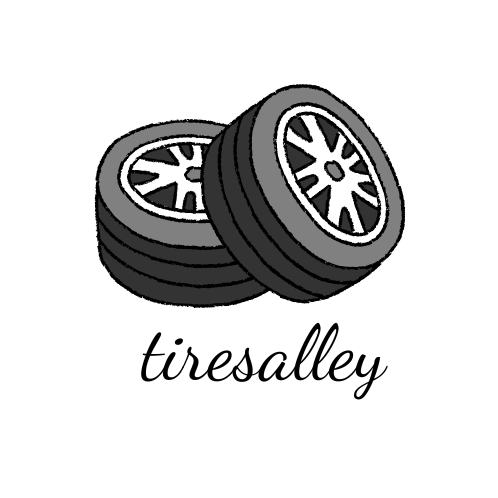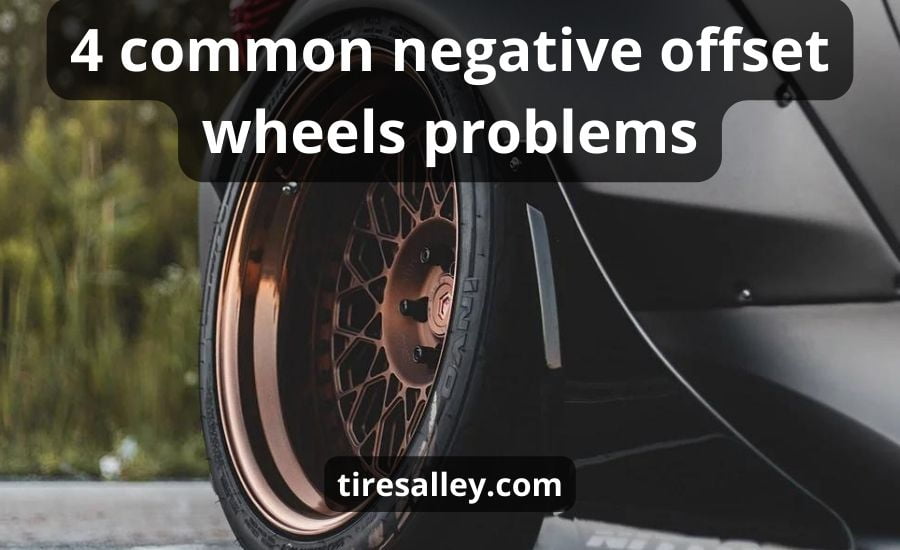What are negative offset wheels problems? When you’re thinking about getting new wheels or making a change, it’s key to understand this thing called “wheel offset”. Negative offset wheels are one type that can cause some headaches if you don’t pick and install them right.
Let’s chat about four common problems with these wheels, what makes them happen, why they’re risky, and how to fix them. Let’s go!
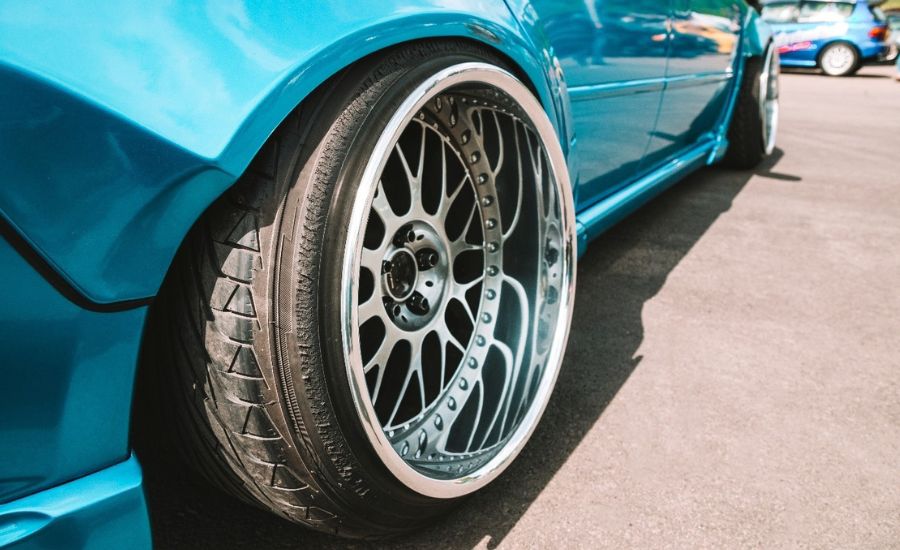
Contents
Impact on wheel bearings
One major issue or problem related to this wheel offset is:
Increased stress: it can cause serious stress on your wheel bearing. When the wheel mounting surface is located much closer to the inner wheel, causing the wheels to stick out, it increases the force you will need to apply to the bearings.
This may give rise to fast wear and risk of failure.
Impact of larger and heavier wheels: this concern becomes worse, particularly in cases when larger and heavier wheels are installed. The extra weight and tire size make the bearings of the wheel wear out faster and increase the chances of them breaking. This can cause lots of difficulties like loud noises, and shaking, and even make it hard to control the vehicle.
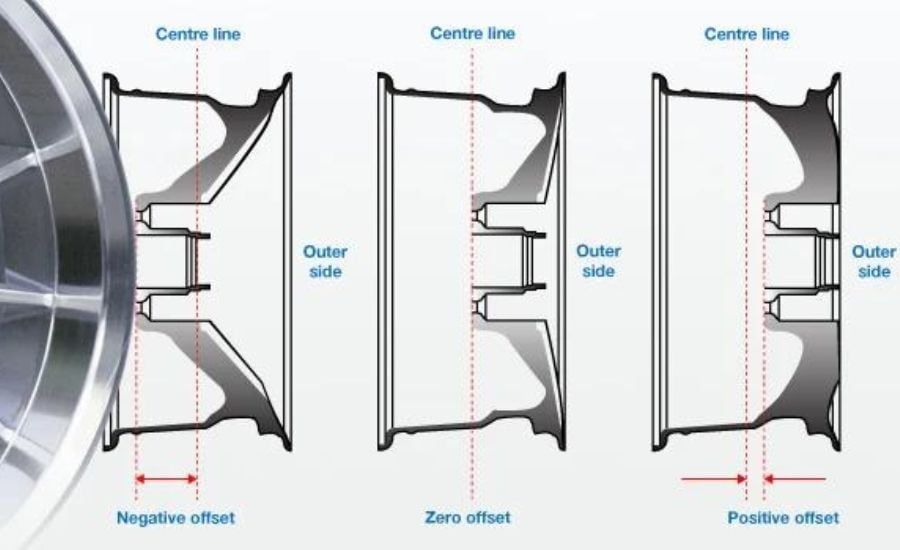
Clearance issues with fenders and body panels
Now let us talk about how this wheel offset causes clearance issues and how they can affect both the functionality and aesthetics of a vehicle.
- Mechanical interference: when this wheel offset is installed on your car, it can end up too close to the inside parts like brakes and suspension. This might cause unwanted contact, causing them to bump into each other and mess things up.
- Handling and stability concerns: this wheel offset can make your car wider, which might make it handle better in corners. But they can also make your tires rub against the car’s body when you turn or go over bumps, making driving less smooth and safe. So you need a proper offset which will give enough clearance
- Cosmetic damage: as mentioned, this protruding offset wheel can rub against the fender, mud flaps, and body panels, resulting in scratches, dents, or paint damage
- Limited tire selection: for example,front-wheel drive cars usually don’t have a lot of room in the front wheel wells, they come with a negative scrub radius. If you put an offset wheel that is negative and needs bigger tires, it could make the problem worse. This might mean you can’t pick the best tires for your vehicle.
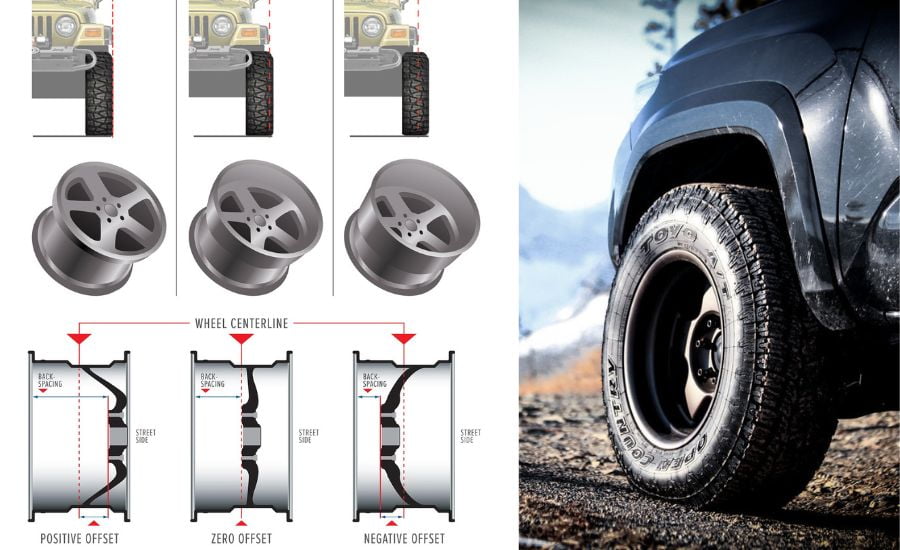
Scrub radius and steering
Another thing to worry about with wheel offset is how it changes the scrub radius. Scrub radius is like the distance between where your tire touches the road and where the steering works.
This wheel offset practically reduces the radius of the scrub. Leading to several effects on steering and stability;
- Steering effort: when the radius becomes smaller. you will have to put in more effort to turn the steering, this occurs because the tire’s grip on the road makes it harder to turn
- Stability: to compromise straight-line stability, this can be noticeable when you’re braking, causing your car to pull to one side.
- Tire wear: The tires wear down, you might see more wear on the inside edges of your tires.
I noticed if you go too far from what the manufacturer recommends, your car might not handle predictably and could even be unsafe to drive. So, I suggest when you’re changing your wheels or offset, keep these things in mind to make sure your vehicle stays in good condition.
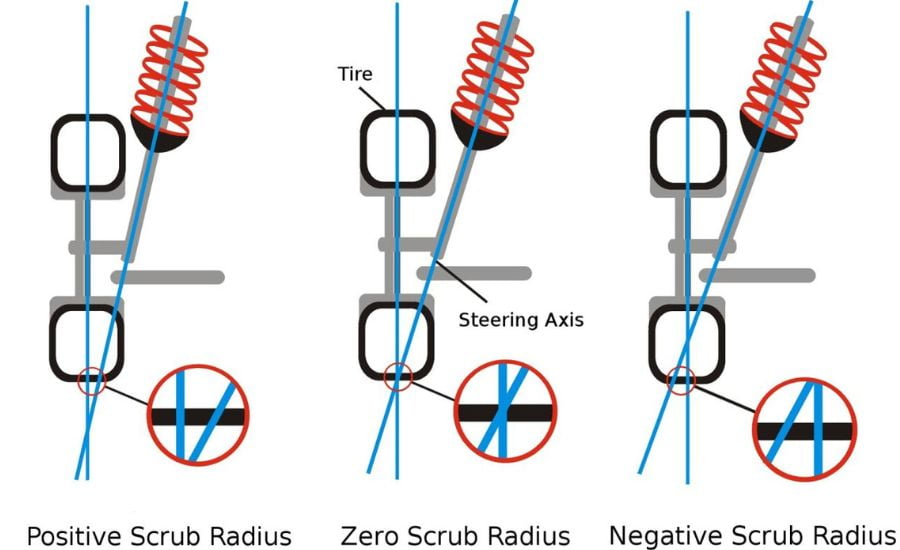
Impact on suspension geometry
When you have a Negative offset, that is when the mounting surface is closer to the inside edge of the wheel, it can mess with how your car’s suspension is set up.
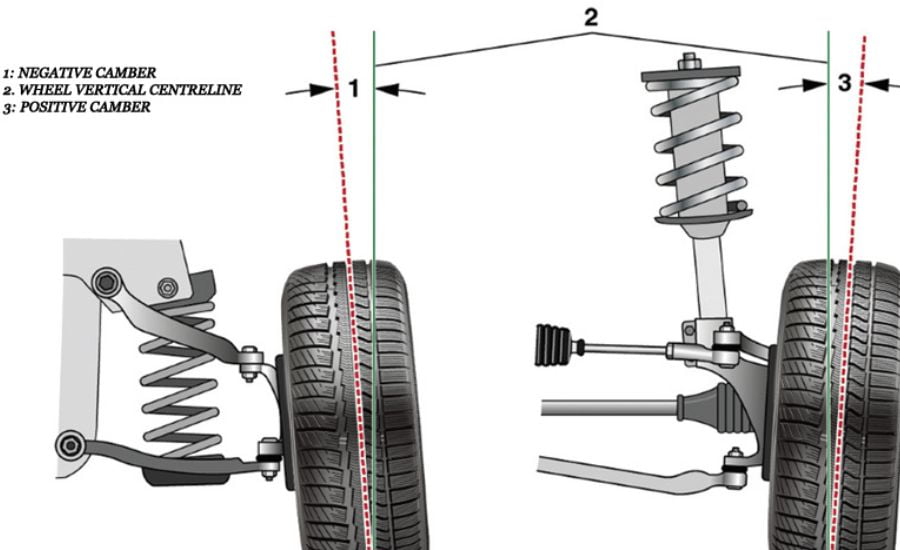
- Alignment angles: negative offset can mess with how your car’s suspension is set up, most especially the angles that keep everything aligned.
- Tire wear: an uneven tire is another issue caused by this wheel offset, when one of the tires wears out more than the other it can make the tire perform poorly and become less safe. This type of wear can make the tire wear out faster and can cause it to fail earlier.
- Suspension dynamics: this wheel offset can mess with how well your suspensions take a toll on your wheels and tires, making it difficult for you when turning. It also affects the suspension’s ability to have proper contact between the tires and the road.
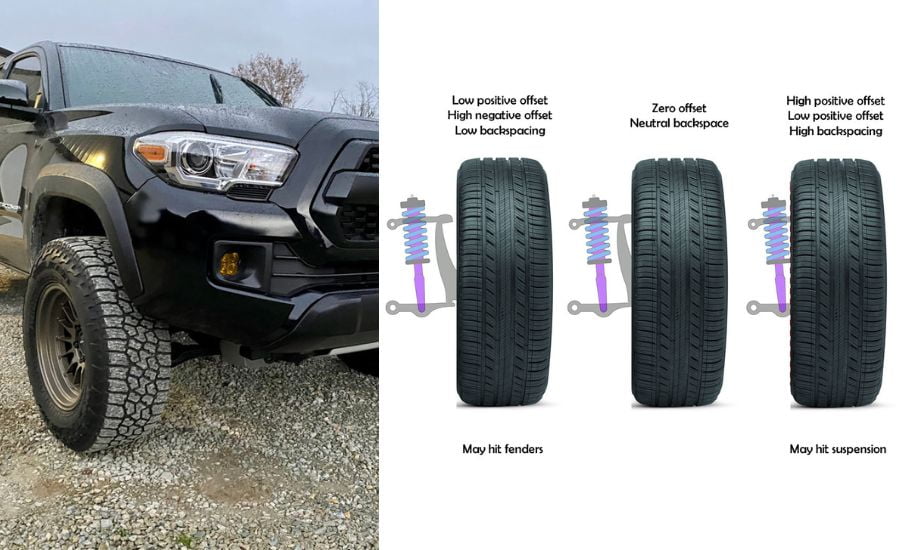
Positive offset
When we talk about negative offset, we can not leave positive offset out, it is the part where the wheel attaches to your car and is closer to the outside edge of the wheel. So, it’s like the wheel is more tucked in toward the street side of your car instead of sticking out.
This arrangement brings the wheel closer to the vehicle’s suspension elements.
Overall, I noticed that positive offset wheels are commonly found on stock wheels and are a good choice for everyday driving. A positive offset can provide enough clearance for suspension components, positive offset helps to maintain stability, positive offset contributes to a smoother ride, picking the proper offset makes sure the tire fits well.
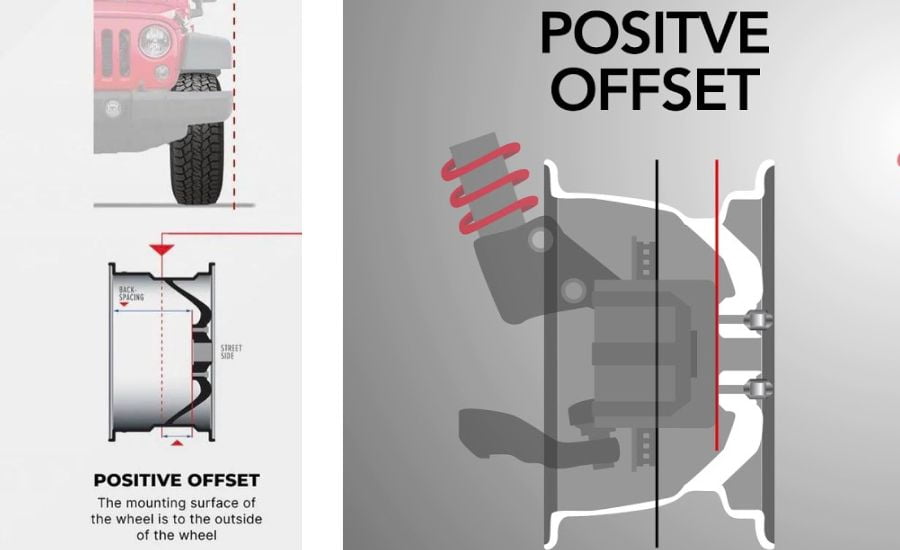
Zero offset
Let’s talk a bit about zero offset. When we talk about wheel offset, this wheel offset represents a scenario where the hub mounting surface of the wheel hub is perfectly aligned with the centerline of the wheel. In simpler terms, if I may, it means that the wheel hub’s mounting surface sits exactly in the middle of the wheel’s width in the same plane.
This zero offset keeps your handling just as the manufacturer intended since the offset is placed evenly
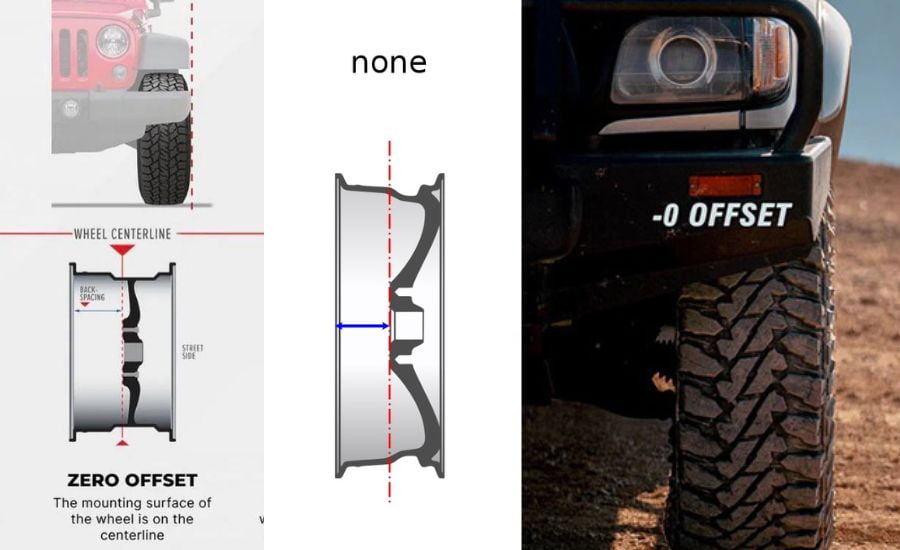
Negative offset
Put simply, it means the hub mounting surface sits nearer to the inner edge, typically where the brakes are, of the wheel.
This wheel offset pushes the wheel outwards, creating a broader appearance.
This offset makes the wheel stick out more. Now let us talk about its problems.
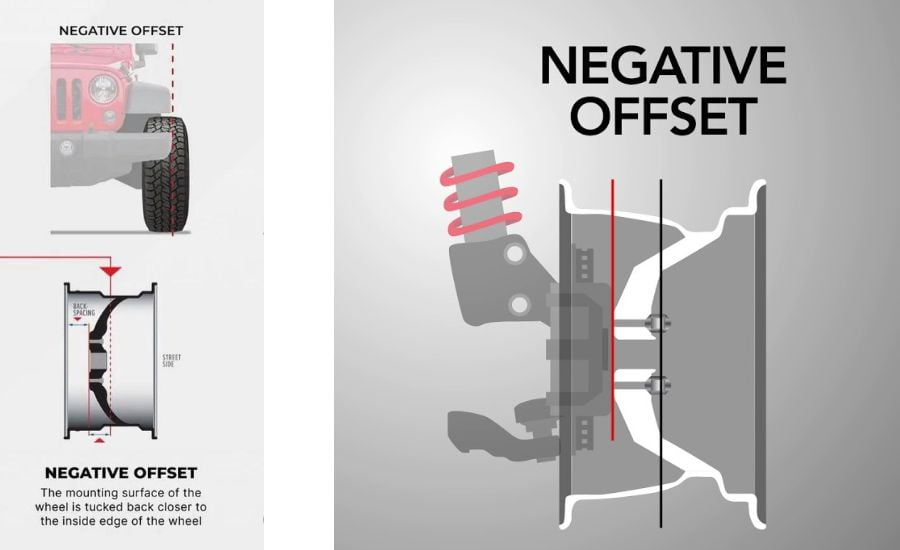
How do I measure wheel offset?
- Get your tools ready. Before you start to measure wheel offset, make sure you have a tape measure, something straight like a ruler, and a sturdy ruler or caliper.
- Figure out the middle of the wheel. Use your ruler to find the exact center of the wheel. That’s called the centerline.
- Measure the distance. The wheel offset is measured from the middle of the wheel width to the hub mounting surface. The wheel width, for clarification, is the distance between the inner and outer edge of a wheel.
- Decide if it’s positive or negative. If the spot where the wheel attaches is closer to the outside edge of the wheel, it’s a positive wheel offset. If it’s closer to the inside edge, it’s a negative wheel offset.
- Write down what you find. Once you’ve figured out the wheel offset and whether it’s a positive wheel offset or a negative wheel offset, I advise you to write it down so you remember. You can use this info when you’re picking out new wheels, to avoid getting new wheels with the wrong offset or checking if your current ones fit your car right.
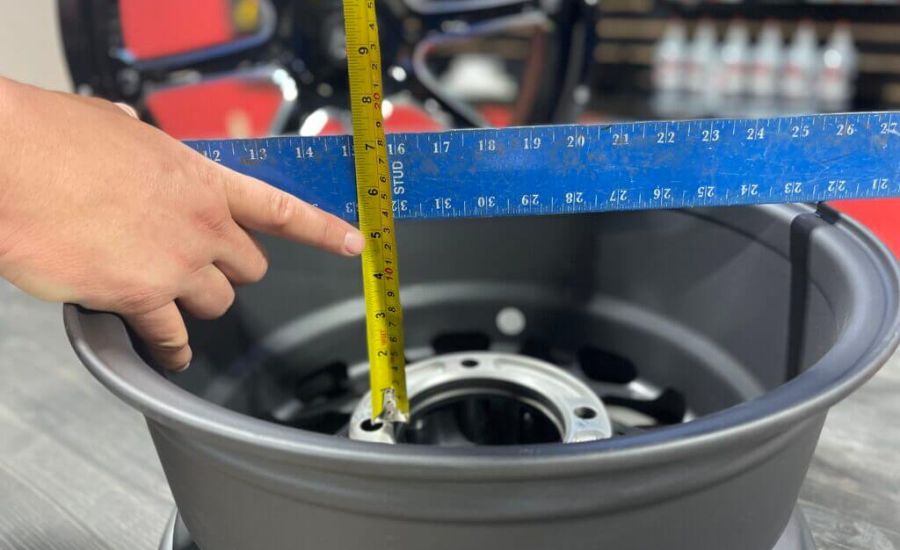
Solutions and precautions
- Getting the right wheel offset. This is crucial when getting new wheels, for your car’s performance and safety, because the wrong offset will reduce the stability of your car. Getting the proper offset for your wheels and tires can be tough, getting it correctly will mean your wheels and tires will work correctly with the geometry of your vehicle, ensuring your wheels and tires do not rub. Your new offset should not be 5 mm greater than your old offset
- Proper wheel spacers. I suggest you add them to get the wheel offset you want without messing up your car’s clearance or alignment. But you need to make sure you choose the right ones that fit your car perfectly. So using cheap or the wrong size spacers could cause even more issues later on. So, invest in good quality spacers to avoid headaches.
- Upgrading suspension components. If your wheels stick out a lot, you might have to upgrade some suspension parts to keep things working right and safe. This could mean adding tougher springs, adjustable control arms, or better sway bars to make sure your car handles well with the new wheel setup. This will make room for enough clearance
- Regular maintenance and inspection. No matter what kind of wheels or tire you pick, it’s super important to keep an eye on things and give your ride some regular TLC. Check your tire for weird wear patterns, listen for any strange noises coming from the bearings, and watch out for any parts rubbing against each other where they shouldn’t be.
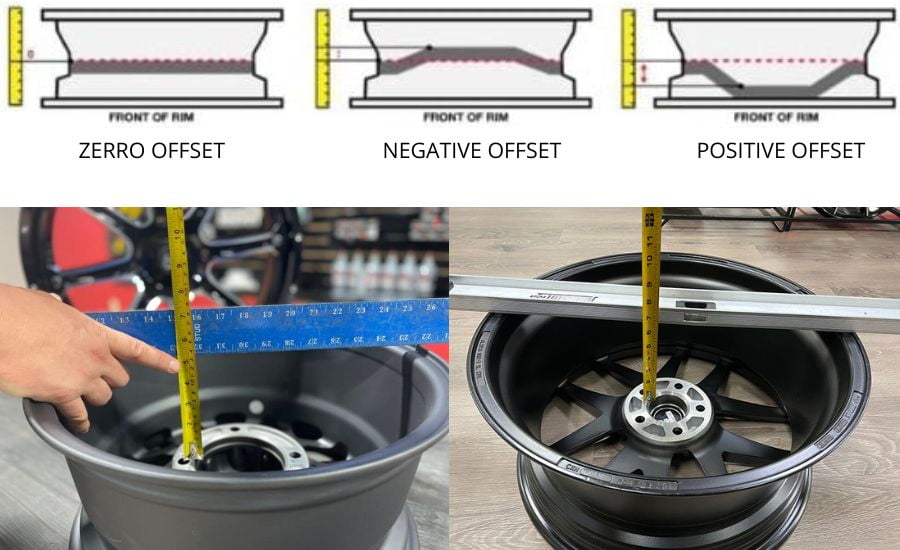
Conclusion
Negative offset wheels can make your ride look slick and perform better, but they have their own issues. Understanding the problems related to these wheels and taking the right precautions means you can still rock that wider stance without messing with safety.
Safety’s key, folks. When in doubt, it’s best to chat with the pros before you mess with your wheels.
Frequently Asked Questions
What are the disadvantages of negative offset?
It can put extra pressure on wheel bearings, mess up the space in the wheel wells, change how the suspension works, and maybe even get in the way of your brakes
Will negative offset make wheels stick out?
Yes, it pushes the wheels out, making them stick further from the car’s body.
Do negative offset wheels rub?
Yes, the wheels might scrape against the insides of your car’s fenders or suspension parts, especially if there’s not enough room in the wheel wells.
How much negative wheel offset is too much?
How much negative offset is too much depends on your car and how you use it. But, in general, if you go overboard with it, it can put extra stress on your car parts and mess up how it handles.
How does negative offset affect steering?
It can alter how your wheels or tire interact with the road, messing up how your steering feels and how stable your ride is. It can also mess with how your car’s suspension is set up, throwing off things like wheel alignment and how well your steering responds.
